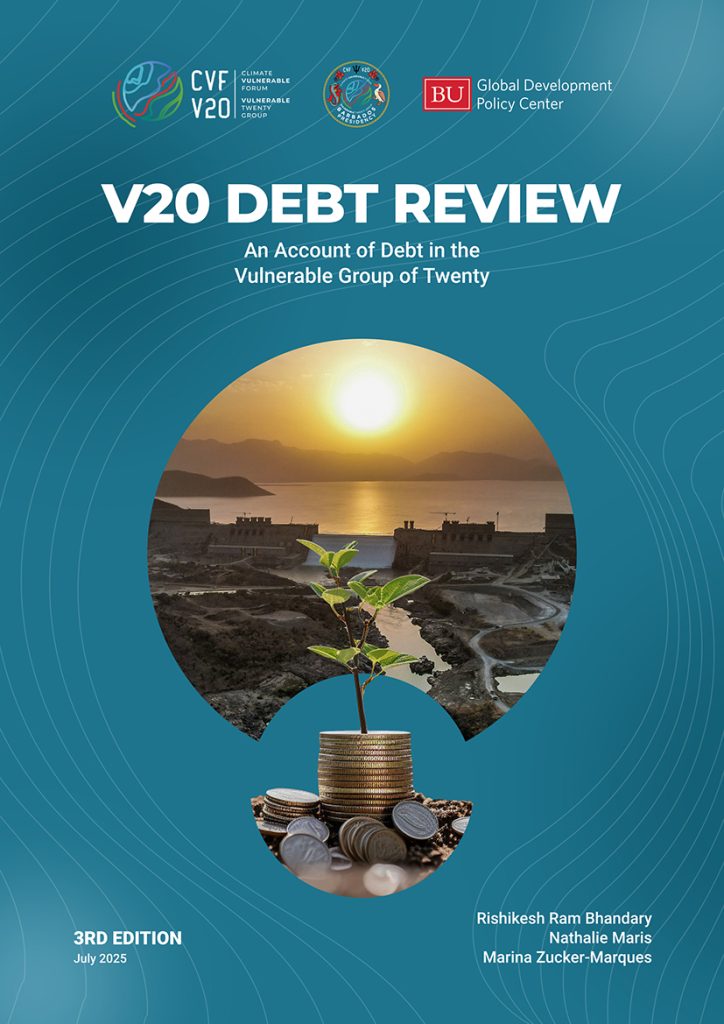V20 Debt Review (Third Edition): An account of debt in the Vulnerable Twenty (V20) Group
The world’s most climate-vulnerable economies have launched bold national strategies to achieve climate prosperity — building resilience, transitioning to clean energy, and driving economic growth. Mobilizing sufficient resources is critical to making these ambitions a reality.
However, members of the Vulnerable Twenty (V20) Group face mounting challenges: high borrowing costs, shrinking official development assistance, tight fiscal space, and growing climate impacts. Adaptation costs keep rising, while geopolitical tensions and market volatility heighten the risk of an uneven, disorderly transition.
The Third Edition of the V20 Debt Review offers a clear snapshot of the sovereign debt landscape for V20 economies over the past 25 years and underscores the urgent need for systemic debt solutions that can unlock climate action and sustainable development.
Key Highlights:
- $1.01 trillion debt stock: In 2023, V20 countries’ external debt reached $1.01 trillion. MDBs hold the largest share (40%).
- Debt service surge: Debt payments tripled from ~$47 billion (2014) to $131 billion (2024). Over 2025–2031, payments will reach $746 billion, about four times the estimated climate investment needs.
- Changing creditors: Private borrowing has grown sharply, exposing countries to more expensive, short-term debt.
- Heavy fiscal burden: 16 countries spend over 20% of revenue on debt payments. In recent years, some spent more on interest than on health or education combined.
- Debt distress: Nearly half of rated V20 countries are already in, or at high risk of, debt distress.
- Relief scenarios: Extending repayment to 40 years could cut debt payments by $267 billion.
With a lower 1.3% rate, savings could reach $454 billion, a 37% reduction.

